After talking about it for a few months, finally on 26th May 2015, the following are able to make the trip :
1. Tan Boon Kwi, my father who had made numerous trip earlier.
2. Tan Boon Guan, my uncle, his wife Cheah Soo Foong and daughter Kang Nie, all first trip.
3. Tan Poh Thiam and wife Winnie, both second trip and son Yew Gin, first trip.
4. Tan Siew Eng, my third aunt, Lee Kim Cha, her husband and sons Lee Ting Hun and Lee Ting Kiat all first trip.
5. Tan Siew Whee, my last aunt, her first trip.
6. Tan Heng Qu, my father's cousin and his wife, Foo Ah Peng both first time.
7. Tan Kang Han, third trip.
We met up at the airport early morning and everyone have a good time catching up.
Tiong Hor having a chat with Uncle Lee.
Tiong Hor is not joining the trip but brought his parents Heng Qu and Ah Peng to the airport.
Soo Foong, with Siew Eng and Siew Whee, my third and last aunt respectively, very comfortable by themselves.
After checking in, it's catch up time for all over coffee.
Heng Qu and my aunties.
Kiat making it simple by ordering for everyone.
Heng Qu and my aunties.
Kiat making it simple by ordering for everyone.
BG and family.
Poh Thiam, Winnie and Ting Hun.
Kiat with his father and mine.
Too many uncles, better stay by himself. Yew Jin at the bar counter.
Kim Cha at the walkalator
BG and Kang Nie all on the way to the check in lounge.
At the waiting lounge before boarding.
Poh Thiam chatting with Kim Cha.
Siew Whee catching up with Ah Peng on the flight. They have not met up in a long time.
Kim Cha catching up with the news.
Heng Qu feeling relaxed.
Poh Thiam and Winnie at the front seat
BG and daughter Kang Nie.
The flight is not full.
Soon all the bags started coming out.
Outside the arrival lobby.
While waiting for our driver.
Kim Cha and Heng Qu in a happy mood.
Kang Nie and family waiting for the rest.
Soon we're outside heading towards the car park.
The airport is not busy this time of the year.
But Kiat is certainly busy.
The driver recommended this restaurant for our lunch.
Being the one fluent in Mandarin, Hun does the food ordering.
The dishes are simple.
We finish our lunch in a jiffy.
It's after 2.30 pm, late hour for lunch. Looks like we're the only lunch guest at the restaurant.
That guy on the left is our driver from Yong Chun county.
That's the 20 seater van which is more than 5 years old. I had insisted it to be a year or two and they say "no problem". That's China. Anyway, really, there is hardly any tourist van that's less than 2 years old in a county.
But the van is in fairly good condition.
Everyone is comfortable in their seat.
The journey took us less than two hours via the highway. The region is mountainous. We have to go through no less than 5 tunnels in that 140 km stretch by the highway.
Yong Chun is land locked by mountains.
Quang Ming whom we met up during the earlier trip three years ago.
Lian Choon and his son came over as well.
Poh Thiam greeting Quang Ming and Lian Choon's son.
Boon Guan meeting Quang Zhian for the first time.
Dad introducing Heng Qu to Quang Zhian.
This is the first time they met.
Having a catch up at the hotel lobby.
It's catch up time.
We adjourned to a local restaurant for dinner.
The restaurant is recommended by Quang Zhian.
Eng Hian doing the honors.
So does Quang Ming.
We needed two tables.
Separation is by drinkers and non drinkers.
We like the bitter gourd here.
Red wine vermicelli.
White duck soup.
These are peasant food, but it taste good.
Quang Ming is Choon Chee's China's cousin. Choon Chee who did not come with us is my father's cousin.
Quang Zhian is his elder brother. They are the closest of relatives in China now.
Tan Lian Choon is a villager in Pang Sua Tao. He is the one that took us to the ancestor's house in my first trip in 2006 when we could not locate it.
Lian Choon's son.
You would not imagine a county to have lighting like these at night.
The night scene is fabulous.
Yong Chun county is transformed with all the ornamental lighting at night.
It is almost like a fairyland.
This was the scene that greet us on our walk back to the hotel.
It had been an eventful day and we were all very tired when we got back to our room. I could imagine everyone slept soundly.
Our breakfast next day was at the hotel which had a nice buffet spread. For a county, this is the first hotel that had buffet breakfast in Yong Choon and it was good.
Siew Eng and Winnie enjoying their breakfast together.
Heng Qu and Ah Peng taking their time to savour their meal.
Ting Hun and Ting Kiat always full of energy.
Soo Foong chatting with Winnie.
You would not believe this is a county hotel's restaurant.
Waiting for the van to pick us up after breakfast.
Yew Jin with BG.
Visiting the village of our ancestors.
Today is the day we visit our ancestors village. There are two villages to visit, first is Pang Sua Tao Village where my grandfather came from and second to visit Taipia Lee Village to try and locate the Lee family ancestors house. As luck would have it, it started to rain in the morning as we were all ready to go.
We got into our van and head towards FengShan.
Tan Eng Hian had invited us to his house at the village for a cup of tea.
This is his house.
Inside the hall. Eng Hian is on the left.
The villages no longer stay in the traditional house. They have all stayed in the newly built houses like these and equip with with modern facilities.
However, there is still a well in every house.
A few of us took a group photo here.
And join by Eng Hian's family.
After the morning tea, it was time to visit the family ancestor'r house. It was still drizzling when we headed out.
Fortunately, we had bought some umbrellas. We also borrowed a few from Eng Hian's house..
It's a wet morning.
The village track is muddy with the rain.
It's better to walk on the grass verge.
Kang Nie and her mum walking gingerly.
"Watch your steps" . Kiat cautioned.
Taking a big step over the puddle.
Hey, this looks fun.
Dancing in the rain.
"Cha cha cha".
A big leap by Lee Kim Cha.
Kiat leading the way.
It is turning out to be an adventure.
Soon, we're at the paddy field section.
You could have a glimpse of the house from here.
There it is. The first view of the house in heavy drizzle. I believe the landscape from here is about the same as the time when my grandfather left this place almost a hundred years ago. It is still inaccessible by modern transportation. You need to walk through the paddy field to reach the house.
This is the house that belongs to my great grandfather, Tan Sew Bin. He had spent a great part of his life seeking fortune at the south seas ( Nanyang ) as a monsoon trader shuttling between Makassar and back to Fujian every six months. My great grandmother, Khoo Swee Neo raised my grandfather, Tan Leong Tham and his siblings in this house. A threat to kidnap my grandfather caused them to flee the village and join my great grandfather who was at that time doing his small trade in Segamat. The house was entrusted to a neighbour, Hong Joo Chim to look after. Hong Joo Chim have since passed away and our host Tan Eng Hian is her great grandson. That was in 1920 and my grandfather was 18 years old. They never came back again nor saw the house after that. It is now almost a hundred years since then. This house is called Eng Chin Tong. For my uncles and aunties who are seeing it for the first time, it is an emotional moment.
Inside the long vacated house.
Tan Heng Qu feeling emotional looking at the name " Eng Chin Tong "
BG taking all in. It is a soul searching journey.
Kiat looking at the entire inner courtyard.
My father conversing with Quang Zhian and Quang Ming.
Kang Nie and Poh Thiam absorbing all in front of them.
It's sad to see this building in a state of disrepair.
Heng Qu still surveying the whole structure.
The rain comes on and off.
He was reluctant to come. Now he is reluctant to leave.
BG having a photo for remembrance.
So is my last aunt, Tan Siew Whee. Two months after this, she passed away unexpectedly in Segamat in her sleep. I am glad she had visited her father's birthplace before finally joining him in the next world.
Heng Qu would have a bigger stake in this house if he stays here.
Sons of Tan Leong Tham, BG, Poh Thiam and my father.
Heng Qu is my father's cousin. Technically, all of them inherit the property in addition to one or two more. The problem is, none of them are keen owners.
Descendants of Tan Leong Tham.
Heng Qu and Ah Peng.
Kiat and I.
My cousin, Ting Hun
After about an hour it's time to leave.
My father leading the way out.
The rest follow suit.
Going out along the same way we came in.
Washing the mud from his legs.
His leg earlier slipped into the side of the ridge.
Kiat taking a few last shot.
Kang Nie continue walking her way out.
One last photo with the view of the house behind.
Heng Qu and Ah Peng also having one for remembrance.
BG also taking one for his album.
As mentioned earlier, the house was entrusted to Mdm Hong Joo Chim to take care when my great grandmother make a hasty departure. She had passed away and her son Tan Geok Hau took over from her. He too had passed away and now his son Tan Poh King and grandson Tan Eng Hian is looking after the property. Eng Hian had invited all of us to his house for lunch after our visit to our ancestor's house. And they really cook up a feast for us which we enjoyed very much.
Tan Eng Hian with me. He had invited us to his house for lunch. He is the great grandson of the original caretaker, Hong Joo Chim.
Washing our muddy legs from the walk through the paddy field.
In this muddy condition, we're thankful there is water to wash away our dirty legs. Village life is all about being practical.
The well water where we used to clean ourselves.
Feels more comfortable without the mud.
The vegetable rice with bamboo shoot is really tasty.
This is the best peasant food we ever have,
It's a special occasion for us and them.
They had organise a few tables for us.
Just the rice is good enough.
But there was plenty of good food.
Aside from the food, it's the casual environment that makes it good.
The host makes sure we have more than enough.
I think they cook like this for big occasion.
There's a lot of food.
Most of us go for second helping.
Pork knuckle stew.
White duck soup.
Pork with mushroom and bamboo shoot..
Squids.
Fish steamed with ginger and onion.
Even our driver join us and feels very much at home.
Heng Qu really enjoyed the food.
BG seems to have too much and is taking a breather.
The generous host and his family.
Ah Peng and Heng Qu taking a break after the meal.
They are joined by Siew Whee.
The Lee family taking a photo for the album.
After lunch, Eng Hian took us to the newly constructed village garden to have a walk around. It is located right next to the association about 500 meters from his house. We walked over there for a look around.
It's a short walk to the garden.
The village Association is just next to it. It is sponsored by successful overseas Chinese. Below are the write up of some of them from this village of Pang Sua Tao. .
Left : Tan Jiak Kim well known in Singapore and Malacca.
Right : Tan Chin Nam, founder of IGB Group in Malaysia.
Tan Heng Qu, in front of the association building.
A group picture at the garden's entrance.
Before leaving, we made one stop at the Tan Ancestor's house. This house belong to the first Tan of the Pang Sua Tao. It is now the village ancestors house.
BG and family in front of the house.
Heng Qu at the Tan ancestor's house at the village.
Taiping Lee Village.
In the morning, Quang Ming had sent his son to the Taiping Lee village to check on a name related to Lee Kin Cha's ancestors. He had found a villager there who says they are connected to that link. We went over to Taiping Lee Village to look up that villager. He welcome us to his house and then took out his Zupu to compare with that brought by Lee Kim Cha.
We passed by Taiping Lee main street.
It looks well developed and modern.
Soon we arrive at the house of Lee's contact.
We are all invited into the house,
Lee Kim Cha and the host pour over the Zupu and compare the family link.
The great thing about Chinese culture is they maintain the family records for generations.
This was the moment when the Zupu indicates Lee Kim Cha and the contact are from the same lineage and generation. This is the closest Chinese relatives for them. There was a shaking of hands immediately after this. I was so caught up with the moment and missed out taking the photos for that historic moment. It was so spontaneous. That guy is actually the closest cousin to Lee Kim Cha. If you look at the photo of both of them, especially the facial feature, there is a resemblance.
Immediately, they each wrote down their contact number.
This is really a historic moment after realising that they are cousins.
Many Chinese separated by tragedy or in their escape from harsh environment in the past have in later years being reunited. It is always through written records that leads them to such reunion. The moment is always a special moment to relish. This case may not be so dramatic, but is nevertheless exciting.
Some of us waited outside while the Lee's went through their records.
Having achieve what they came for, the next step is to visit the family ancestor's house. However, that house have since been demolish to make way for developments.
We left the China Lee's house together. They wanted to go over to the Lee ancestor's house to pay their respect and for Lee Kim Cha, to have a look at the area where his family ancestor's house once stood.
Passing by Taiping Lee county again.
Neat and modern
Entering the village.
The entrance at the village.
This is the ancestor's house of another prominent Malaysian, Lee San Choon.
The Lee Clan ancestor's house is next to it.
At the entrance of the Lee clan ancestor's house.
Panoramic view of the courtyard.
Preparing to pay respect to the ancestors.
It's what all Chinese do when they come to their ancestors place.
Lighting up the joss.
Father and son paying respect.
There you go, the Lee family praying to their ancestors.
Paying homage to their ancestors..
Burning incense after that.
Looking at the ancestors tablet.
At the entrance.
Ting Hun at the entrance.
A picture together with their new found relative.
Brothers at the courtyard.
And outside.
The Lee at their clan house.
Happy is a newly found relative.
One more for the road.
After that, we took a short drive to the area where Lee Kim Cha's family house used to be.
He remember seeing a picture of the house that is almost in ruins.
This time, there is nothing there except a vacant land ready for development.
Yes, it used to be there.
This is what can happen if Eng Chin Tong is no more there.
Satisfied, we all take leave.
Dongguan Bridge.
We still have some time and headed for the bridge that my grandfather had mentioned many times before. He used to say,"Good wood will not flow till Dongguan Bridge". I never know what it actually means, but it is that bridge that we want to see.
The signage at the front of the bridge.
The bridge is 85 meters long and build during the Southern Song period, around 900 years ago.
Supporting pier.
Large fir woods are used for the base.
Boats taking visitors for a ride on the river.
There are always locals who like to "lepak" there.
It's 5 meter wide.
Chinese fairy tales painted on the interior gables.
Midway at the bridge, there is a Goddess of Mercy for those who wish to pray.
View from the bridge, upstream
View of downstream from the bridge.
Walking on the bridge that they have heard so many times before.
It's a walk into family history.
Every step is a step back in time.
Pausing for a photo.
This is the bridge Leong Tham always mentioned.
A group photo is a must.
Dinner hosted by Quang Zhian and Quang Ming.
The hospitality of our China cousins are exceptional. They had insisted we come over to their house for dinner, just like our earlier trip. And so after our visit to the bridge, we went over to their house, to another home cooked dinner.
We had enjoyed their dinner during our earlier trip.
It is no different this time, we enjoyed it just as much.
Tong Kua soup.
Meat with vegetables.
Squid.
Tong'an pork.
We ate to our hearts content.
Needless to say, many of us have second helping again.
And again, BG looks like his tummy cannot hold any more good food.
The host family join us as well.
After dinner, we gathered outside the house for a chat.
Their children and son-in-law came to mingle with us too.
We thank the host for everything. They had spent the whole day with us.
It was a tiring but fulfilling day. We had brave the rain, walk on muddy tracks, visited the family ancestors house, visit the lee clans ancestors house, walk on the Dongguan Bridge that we heard so many times and had meals hosted by our China relatives. All our main objectives had been achieved in one day.
Quanzhou, City of lights.
Quanzhou was described as a "City of Lights" by Jacob d' Ancona, a little know Jewish merchant. He had actually arrived in China at the coastal city of Zayton four years before Marco Polo arrived at Xanadu in 1275. Zayton was the Arabic name for Quanzhou and it is from this name the word "satin", the popular Chinese fabric came about. "When night falls, countless lamps and torches light up the streets and lanes and the whole city viewed from afar turns into a sea of lights",wrote Jacob in his manuscript. Columbus, who had devoured Marco Polo unimaginable accounts of Zayton's wealth had really sought for this magical land but ended up founding the "New World". Zayton was the starting point of the Maritime Silk Road and this was the legendary port of call for Ibn Battuta, Sinbad the Sailor and Admiral Zhenghe, who had sailed the seven seas in his 440 feet treasure ship. That would have dwarfed Columbus little 85 feet Santa Maria, who started his maritime adventure 70 years after Zhenghe.
In it's heydays, Quanzhou rivaled Alexandria as the largest port on earth. Merchants from the Muslim world, Europe, India came here to trade and some stayed making Quanzhou a melting pot for different cultures and religion.UNESCO dubbed Quanzhou a "World Museum of Religion". Marco Polo was impressed by it's gems, pearls, silk and porcelain. Dehua was the producer of the famed "Blanc de Chine" porcelain now prized by museums all the world over, including China itself.
It is this City that we had planned to visit, but alas only for a quick day trip. There was much to see and do but for a day trip all we had was a trip to the Overseas Chinese Museum, China Taiwan Friendship Museum, and the legendary Kaiyuan Temple.
The driver insisted that we have a look at the China Taiwan Friendship Museum which was our first stop at Quanzhou.
BG, Kang Nie and Soo Foong taking a family picture at the museum square.
Poh Thiam and family at the Taiwan Friendship museum.
BG and Family again.
And another shot at the view from the front.
A group photo at the front of the museum.
The junk that was used for trade and migration.
Most of them ended up as coolies at the Nanyang.
Another plague detailing the localization of Chinese people abroad.
Our next itinerary is a visit to the legendary Kaiyun Temple. My father and I had been here before, but not the rest.
A layout plan of the Kaiyuan Temple.
Detailing the rich history of the temple.
Description in Chinese.
It's natural for some to pray at temples anywhere.
Heng Qu and Ah Peng praying at the temple.
Ting Kiat in his religious self..
One of the two pagodas in the compound.
We left Quanzhou after lunch and headed back to Yong Chun. Some of us had wanted to do some last minute shopping at Yong Chun while Kiat, Hun and I had planned to see some porcelain at Dehua.
An evening trip to Dehua.
BG and Kang Nie all on the way to the check in lounge.
At the waiting lounge before boarding.
Poh Thiam chatting with Kim Cha.
Siew Whee catching up with Ah Peng on the flight. They have not met up in a long time.
Kim Cha catching up with the news.
Heng Qu feeling relaxed.
Poh Thiam and Winnie at the front seat
BG and daughter Kang Nie.
The flight is not full.
It took only four hours to reach Xiamen.
We are early at the carousel.Soon all the bags started coming out.
Outside the arrival lobby.
While waiting for our driver.
Kim Cha and Heng Qu in a happy mood.
Kang Nie and family waiting for the rest.
Soon we're outside heading towards the car park.
The airport is not busy this time of the year.
But Kiat is certainly busy.
The driver recommended this restaurant for our lunch.
Being the one fluent in Mandarin, Hun does the food ordering.
The dishes are simple.
We finish our lunch in a jiffy.
It's after 2.30 pm, late hour for lunch. Looks like we're the only lunch guest at the restaurant.
That guy on the left is our driver from Yong Chun county.
That's the 20 seater van which is more than 5 years old. I had insisted it to be a year or two and they say "no problem". That's China. Anyway, really, there is hardly any tourist van that's less than 2 years old in a county.
But the van is in fairly good condition.
Everyone is comfortable in their seat.
The journey took us less than two hours via the highway. The region is mountainous. We have to go through no less than 5 tunnels in that 140 km stretch by the highway.
Yong Chun is land locked by mountains.
We arrived at this very recently opened hotel called the Grand Honor Hotel, part of the Rongyu Group of Hotels.
Upon arrival, our guest were already there to greet us.Quang Ming whom we met up during the earlier trip three years ago.
Lian Choon and his son came over as well.
Poh Thiam greeting Quang Ming and Lian Choon's son.
Boon Guan meeting Quang Zhian for the first time.
Dad introducing Heng Qu to Quang Zhian.
This is the first time they met.
Having a catch up at the hotel lobby.
It's catch up time.
We adjourned to a local restaurant for dinner.
The restaurant is recommended by Quang Zhian.
Eng Hian doing the honors.
So does Quang Ming.
We needed two tables.
Separation is by drinkers and non drinkers.
We like the bitter gourd here.
Red wine vermicelli.
These are peasant food, but it taste good.
Quang Ming is Choon Chee's China's cousin. Choon Chee who did not come with us is my father's cousin.
Quang Zhian is his elder brother. They are the closest of relatives in China now.
Tan Lian Choon is a villager in Pang Sua Tao. He is the one that took us to the ancestor's house in my first trip in 2006 when we could not locate it.
Lian Choon's son.
Tan Poh King is the grandson of the original caretaker, Hong Joo Chim. Next to him is his son, Tan Eng Hian.
Our first day ended well with a nice dinner together with our China connection.
This is the restaurant that we dine in.
While the rest went back to the hotel by car, Poh Thiam, I and my cousins prefer a leisurely walk back.You would not imagine a county to have lighting like these at night.
The night scene is fabulous.
Yong Chun county is transformed with all the ornamental lighting at night.
It is almost like a fairyland.
This was the scene that greet us on our walk back to the hotel.
It had been an eventful day and we were all very tired when we got back to our room. I could imagine everyone slept soundly.
Our breakfast next day was at the hotel which had a nice buffet spread. For a county, this is the first hotel that had buffet breakfast in Yong Choon and it was good.
Siew Eng and Winnie enjoying their breakfast together.
Heng Qu and Ah Peng taking their time to savour their meal.
Ting Hun and Ting Kiat always full of energy.
Soo Foong chatting with Winnie.
You would not believe this is a county hotel's restaurant.
Waiting for the van to pick us up after breakfast.
Yew Jin with BG.
Visiting the village of our ancestors.
Today is the day we visit our ancestors village. There are two villages to visit, first is Pang Sua Tao Village where my grandfather came from and second to visit Taipia Lee Village to try and locate the Lee family ancestors house. As luck would have it, it started to rain in the morning as we were all ready to go.
We got into our van and head towards FengShan.
Tan Eng Hian had invited us to his house at the village for a cup of tea.
This is his house.
Inside the hall. Eng Hian is on the left.
The villages no longer stay in the traditional house. They have all stayed in the newly built houses like these and equip with with modern facilities.
However, there is still a well in every house.
A few of us took a group photo here.
And join by Eng Hian's family.
After the morning tea, it was time to visit the family ancestor'r house. It was still drizzling when we headed out.
Fortunately, we had bought some umbrellas. We also borrowed a few from Eng Hian's house..
It's a wet morning.
The village track is muddy with the rain.
It's better to walk on the grass verge.
Kang Nie and her mum walking gingerly.
"Watch your steps" . Kiat cautioned.
Taking a big step over the puddle.
Hey, this looks fun.
Dancing in the rain.
"Cha cha cha".
A big leap by Lee Kim Cha.
Kiat leading the way.
It is turning out to be an adventure.
Soon, we're at the paddy field section.
You could have a glimpse of the house from here.
Inside the long vacated house.
Tan Heng Qu feeling emotional looking at the name " Eng Chin Tong "
BG taking all in. It is a soul searching journey.
Kiat looking at the entire inner courtyard.
My father conversing with Quang Zhian and Quang Ming.
Kang Nie and Poh Thiam absorbing all in front of them.
It's sad to see this building in a state of disrepair.
Heng Qu still surveying the whole structure.
The rain comes on and off.
He was reluctant to come. Now he is reluctant to leave.
BG having a photo for remembrance.
So is my last aunt, Tan Siew Whee. Two months after this, she passed away unexpectedly in Segamat in her sleep. I am glad she had visited her father's birthplace before finally joining him in the next world.
Heng Qu would have a bigger stake in this house if he stays here.
Sons of Tan Leong Tham, BG, Poh Thiam and my father.
Heng Qu is my father's cousin. Technically, all of them inherit the property in addition to one or two more. The problem is, none of them are keen owners.
Descendants of Tan Leong Tham.
Heng Qu and Ah Peng.
Kiat and I.
My cousin, Ting Hun
After about an hour it's time to leave.
The rest follow suit.
Going out along the same way we came in.
Washing the mud from his legs.
His leg earlier slipped into the side of the ridge.
Kiat taking a few last shot.
Kang Nie continue walking her way out.
One last photo with the view of the house behind.
Heng Qu and Ah Peng also having one for remembrance.
BG also taking one for his album.
One last look at the house. This is not just another house. This is our only connection to the past. Preservation of the house is preservation of the family history. If nothing is done, this structure is not going to last another hundred years.
Lunch hosted by the caretaker's family.
Tan Eng Hian with me. He had invited us to his house for lunch. He is the great grandson of the original caretaker, Hong Joo Chim.
Washing our muddy legs from the walk through the paddy field.
In this muddy condition, we're thankful there is water to wash away our dirty legs. Village life is all about being practical.
The well water where we used to clean ourselves.
Feels more comfortable without the mud.
The vegetable rice with bamboo shoot is really tasty.
This is the best peasant food we ever have,
It's a special occasion for us and them.
They had organise a few tables for us.
Just the rice is good enough.
But there was plenty of good food.
Aside from the food, it's the casual environment that makes it good.
The host makes sure we have more than enough.
I think they cook like this for big occasion.
There's a lot of food.
Most of us go for second helping.
Pork knuckle stew.
White duck soup.
Pork with mushroom and bamboo shoot..
Squids.
Fish steamed with ginger and onion.
Even our driver join us and feels very much at home.
Heng Qu really enjoyed the food.
BG seems to have too much and is taking a breather.
The generous host and his family.
Ah Peng and Heng Qu taking a break after the meal.
They are joined by Siew Whee.
The Lee family taking a photo for the album.
After lunch, Eng Hian took us to the newly constructed village garden to have a walk around. It is located right next to the association about 500 meters from his house. We walked over there for a look around.
It's a short walk to the garden.
The village Association is just next to it. It is sponsored by successful overseas Chinese. Below are the write up of some of them from this village of Pang Sua Tao. .
Left : Tan Jiak Kim well known in Singapore and Malacca.
Right : Tan Chin Nam, founder of IGB Group in Malaysia.
Left : Tan Sin Lew, made his mark in Malacca during the Dutch rule. He is our direct ancestor.
Right : Tan Kim Seng, (grandson of Tan Sin Lew) is well known in Singapore and Malacca.
Before leaving, we made one stop at the Tan Ancestor's house. This house belong to the first Tan of the Pang Sua Tao. It is now the village ancestors house.
BG and family in front of the house.
Heng Qu at the Tan ancestor's house at the village.
Taiping Lee Village.
In the morning, Quang Ming had sent his son to the Taiping Lee village to check on a name related to Lee Kin Cha's ancestors. He had found a villager there who says they are connected to that link. We went over to Taiping Lee Village to look up that villager. He welcome us to his house and then took out his Zupu to compare with that brought by Lee Kim Cha.
We passed by Taiping Lee main street.
It looks well developed and modern.
Soon we arrive at the house of Lee's contact.
We are all invited into the house,
Lee Kim Cha and the host pour over the Zupu and compare the family link.
The great thing about Chinese culture is they maintain the family records for generations.
This was the moment when the Zupu indicates Lee Kim Cha and the contact are from the same lineage and generation. This is the closest Chinese relatives for them. There was a shaking of hands immediately after this. I was so caught up with the moment and missed out taking the photos for that historic moment. It was so spontaneous. That guy is actually the closest cousin to Lee Kim Cha. If you look at the photo of both of them, especially the facial feature, there is a resemblance.
Immediately, they each wrote down their contact number.
This is really a historic moment after realising that they are cousins.
Many Chinese separated by tragedy or in their escape from harsh environment in the past have in later years being reunited. It is always through written records that leads them to such reunion. The moment is always a special moment to relish. This case may not be so dramatic, but is nevertheless exciting.
Some of us waited outside while the Lee's went through their records.
Having achieve what they came for, the next step is to visit the family ancestor's house. However, that house have since been demolish to make way for developments.
We left the China Lee's house together. They wanted to go over to the Lee ancestor's house to pay their respect and for Lee Kim Cha, to have a look at the area where his family ancestor's house once stood.
Passing by Taiping Lee county again.
Neat and modern
Entering the village.
The entrance at the village.
This is the ancestor's house of another prominent Malaysian, Lee San Choon.
The Lee Clan ancestor's house is next to it.
At the entrance of the Lee clan ancestor's house.
Panoramic view of the courtyard.
Preparing to pay respect to the ancestors.
It's what all Chinese do when they come to their ancestors place.
Lighting up the joss.
Father and son paying respect.
There you go, the Lee family praying to their ancestors.
Paying homage to their ancestors..
Siew Eng is married to the Lee family.
Hanging up the joss.Burning incense after that.
Looking at the ancestors tablet.
At the entrance.
Ting Hun at the entrance.
A picture together with their new found relative.
Brothers at the courtyard.
And outside.
The Lee at their clan house.
Happy is a newly found relative.
One more for the road.
After that, we took a short drive to the area where Lee Kim Cha's family house used to be.
He remember seeing a picture of the house that is almost in ruins.
This time, there is nothing there except a vacant land ready for development.
Yes, it used to be there.
This is what can happen if Eng Chin Tong is no more there.
Satisfied, we all take leave.
Dongguan Bridge.
We still have some time and headed for the bridge that my grandfather had mentioned many times before. He used to say,"Good wood will not flow till Dongguan Bridge". I never know what it actually means, but it is that bridge that we want to see.
The signage at the front of the bridge.
The bridge is 85 meters long and build during the Southern Song period, around 900 years ago.
Supporting pier.
Large fir woods are used for the base.
Boats taking visitors for a ride on the river.
There are always locals who like to "lepak" there.
It's 5 meter wide.
Chinese fairy tales painted on the interior gables.
Midway at the bridge, there is a Goddess of Mercy for those who wish to pray.
View from the bridge, upstream
View of downstream from the bridge.
Walking on the bridge that they have heard so many times before.
It's a walk into family history.
Every step is a step back in time.
Pausing for a photo.
This is the bridge Leong Tham always mentioned.
A group photo is a must.
The hospitality of our China cousins are exceptional. They had insisted we come over to their house for dinner, just like our earlier trip. And so after our visit to the bridge, we went over to their house, to another home cooked dinner.
We had enjoyed their dinner during our earlier trip.
It is no different this time, we enjoyed it just as much.
The madam of the house used to be a cook in a restaurant.
Baby bamboo shootTong Kua soup.
Meat with vegetables.
Squid.
Tong'an pork.
Quang Zhian filling up more soup.
Again this is very good home cook food.We ate to our hearts content.
Needless to say, many of us have second helping again.
And again, BG looks like his tummy cannot hold any more good food.
The host family join us as well.
After dinner, we gathered outside the house for a chat.
Their children and son-in-law came to mingle with us too.
This is real country style, and we are very comfortable with it.
It's late, and we have to be going.We thank the host for everything. They had spent the whole day with us.
It was a tiring but fulfilling day. We had brave the rain, walk on muddy tracks, visited the family ancestors house, visit the lee clans ancestors house, walk on the Dongguan Bridge that we heard so many times and had meals hosted by our China relatives. All our main objectives had been achieved in one day.
Quanzhou, City of lights.
In it's heydays, Quanzhou rivaled Alexandria as the largest port on earth. Merchants from the Muslim world, Europe, India came here to trade and some stayed making Quanzhou a melting pot for different cultures and religion.UNESCO dubbed Quanzhou a "World Museum of Religion". Marco Polo was impressed by it's gems, pearls, silk and porcelain. Dehua was the producer of the famed "Blanc de Chine" porcelain now prized by museums all the world over, including China itself.
It is this City that we had planned to visit, but alas only for a quick day trip. There was much to see and do but for a day trip all we had was a trip to the Overseas Chinese Museum, China Taiwan Friendship Museum, and the legendary Kaiyuan Temple.
The driver insisted that we have a look at the China Taiwan Friendship Museum which was our first stop at Quanzhou.
BG, Kang Nie and Soo Foong taking a family picture at the museum square.
Poh Thiam and family at the Taiwan Friendship museum.
BG and Family again.
And another shot at the view from the front.
A group photo at the front of the museum.
And another happy pose.
We went to the Overseas Chines museum after that.
Some background to the migration from Quanzhou.The junk that was used for trade and migration.
Most of them ended up as coolies at the Nanyang.
Another plague detailing the localization of Chinese people abroad.
A layout plan of the Kaiyuan Temple.
Detailing the rich history of the temple.
Description in Chinese.
It's natural for some to pray at temples anywhere.
Heng Qu and Ah Peng praying at the temple.
Ting Kiat in his religious self..
One of the two pagodas in the compound.
An evening trip to Dehua.
Ting Hun had a fascination for porcelain and Dehua is very near to Yong Chun, just under 50 km. After coming back from Quanzhou, Hun, Kiat and I decided to visit Dehua immediately upon dropping the rest at the hotel at Grand Honor Hotel. The journey is less than an hour by car. Dehua county is famed for porcelain as mentioned in Marco Polo's travel. The whole county's economy is driven by manufacturing of porcelain for which it is famous the world over and since historical times.
On both side of the street, the shops sell all types of porcelain.
The driver parked the car at the side street parking and wait for us.
View of the street from another side.
Chinese teapots.
An array of teapots and mini vase.
More designs.
The porcelain is superfine.
Figurines have very intricate designs.
More figurines.
Lighted display of porcelains at one of the shops.
You are spoilt for choice.
Green porcelain tea set.
White is what Dehua is famed for.
These are the latest range.
The design is new.
Fantastic hand painted vases.
Large vase and figurines.
White Buddhas
Green figurines from Chinese folklore.
Green "Fook, Lok, Sou".
White " Fook, Lok, Sou "
Dining Set
Bone China dining set.
Tea Sets.
We had dinner at one of the restaurant along the same street.
They had bamboo rice too, just like our "lemang" .
The rice is cooked inside the bamboo,
Bamboo shoot
Toufoo in claypot.
It was peasant food, taste good.
We left Dehua at about 9.00 pm satisfied. Hun and Kiat bought a dining set while I settled for a tea set. In addition, Hun bought a figurine of an elephant for his office. It's a place to come to if you are looking for porcelain.
Buying "Kau Na" - Traditional Bamboo Basket.
Yong Chun is popular for "Kau Na". In our younger days, we always had this "kau na" that our grandparents talked about that is made in Yong Chun. Locally, the Malacca Kau Na may only have the picture of dragon and phoenix, but not embossed. Here, the design is more intricate. We had bought some in our earlier trip, but there are always friends and relatives to buy for. Many Chinese still have the fascination for the traditional bamboo basket.
On both side of the street, the shops sell all types of porcelain.
The driver parked the car at the side street parking and wait for us.
View of the street from another side.
Chinese teapots.
An array of teapots and mini vase.
More designs.
The porcelain is superfine.
Figurines have very intricate designs.
More figurines.
Lighted display of porcelains at one of the shops.
You are spoilt for choice.
Green porcelain tea set.
White is what Dehua is famed for.
These are the latest range.
The design is new.
Fantastic hand painted vases.
Large vase and figurines.
White Buddhas
Green figurines from Chinese folklore.
Green "Fook, Lok, Sou".
White " Fook, Lok, Sou "
Dining Set
Bone China dining set.
Tea Sets.
We had dinner at one of the restaurant along the same street.
They had bamboo rice too, just like our "lemang" .
The rice is cooked inside the bamboo,
Bamboo shoot
Toufoo in claypot.
It was peasant food, taste good.
Buying "Kau Na" - Traditional Bamboo Basket.
This is the same place we came and bought some Kau Na a few years ago.
It is a cottage industry where the owner also stays here.
We literally barge,open the door ourselves when no one answered our knock.
Hun looking at some semi finish basket.
I thought it looks good in it's semi completed stage and proceed to buy one of this.
There are a lot more on the upper level.
Ting Hun at the upper floor.
They are all gathering dust here.
These are even exported to Malaysia, Singapore and Indonesia.
These three are actually miniatures.
After rummaging through the whole place and some hard bargaining, we bought quite a number of these baskets that have to be packed into a few carton boxes.
It is a cottage industry where the owner also stays here.
We literally barge,open the door ourselves when no one answered our knock.
Hun looking at some semi finish basket.
I thought it looks good in it's semi completed stage and proceed to buy one of this.
There are a lot more on the upper level.
Ting Hun at the upper floor.
They are all gathering dust here.
These are even exported to Malaysia, Singapore and Indonesia.
These three are actually miniatures.
After rummaging through the whole place and some hard bargaining, we bought quite a number of these baskets that have to be packed into a few carton boxes.
Farewell Yong Chun.
Having stayed in Yong Chun for three days and completed what we came for, it is time to leave. Although the stay is short, the memories are long and it does not seem to be our final farewell. Some of us will be back for sure. But we still have one more night stay at the big city of Xiamen. On our way out, we've decided to passed through one of China's most popular tea planting area, the mountainous Anxi tea farming region. This is the area where the famous Oolong tea called "tiguanyin" came from. It is the most popular of all Oolong teas, low yield, can best grown between 400 to 1000 meters. It produces a special aroma, pure flavour and is of high quality. Needless to say, the drive towards the mountain region is a narrow, long and winding road.
On the way out of Yong Chun.
Pass by Kushan, the village of "Sio Kor" Tan.
The roads are much better than our grandfather's time.
Exiting the first of the many tunnels.
Another one.
I guess we pass through at least five.
Kiat and Hun occupying the front seat
Those at the back are relaxing.
One by one, they start drifting into la la land.
It's a long journey ahead, better take some rest.
About to ext the highway.
Once we're off the highway and onto the mountainous road, we stopped for a pee break at some rural shop.
The first sign of the tea mountain.
All the way, we are greeted by this landscape.
We soon start passing some tea shops.
And promptly decided to stop at one of those.
Inside the tea shop.
Heng Qu posing outside the shop.
Our van parked on the road. Driver was trying to hurry us off.
Waiting for the tea tasting.
Pile of dried tea leaves ready to be packed for sale.
The proprietor pouring some tea for tasting.
Anytime you drink tea in this type of place, it is always flavourful with nice aroma.
The planter and his grandson.
BG tasting the tea.
Tea growing on flat terrain
Tea grown on slopes.
The road ahead.
We did some purchases and is soon on our way.
Our next place of stopover is at Hua'an to visit Eryilou. It is about an hour of mountain road to reach there. We had made arrangements to have lunch at Hua'an itself.
The journey to Hua'an passes through some villages. Some like this have roads widen so much that it encroaches the traditional houses.
Passing another village.
We can see the valley below where there are settlements.
This is the "wild wild west" kind of place.
The screen shot taken while we were on the road. You can see that Hua'an is very insular, a mountainous hinterland.
The long and winding road.
Another turn and we're at our destination.
Radish
Chinese pork sausages
Salted vegetable cooked with pork
Pumpkin.
Tofu.
Enjoying peasant food.
It's not luxury food, but we enjoyed it.
There's always more food than what we could eat.
Everyone eat to their heart content.
The local tour guide is already waiting to take us to the tulou.
It's midday and the sun is blazing as we stroll towards Eryilou.
That's Eryilou, also known as King of Round Tulou.
Unesco declared it as a Heritage site at it's 32nd session meeting at Canada.
It was built in 1770 and has been resided by the Jiang family clan ever since.
It measure 75.5 M in diameter and is one of the largest tulou in Fujian province.
There are 40 household numbering about 200 people staying in this tulou.
The whole building is divided into 16 units with a total of 213 rooms.
The tour guide giving us a quick brief on the history and culture of Eryilou.
She is one of the resident of Eryilou.
A protected site.
Some rules for the residents here.
Checking out the interior on Eryilou.
The small gap at the ceiling level where water can flow through to extinguish any potential fire threat from the enemies.
Checking out the upper levels.
As in all old buildings, no nails.
The structure are originals.
The narrow corridor at the outer ring.
At one of the living room displaying tourist souvenirs.
A view of the farm outside from the window.
The Jiang family altar.
A panoramic view on the inside of the tulou with the courtyard.
Having a pic taken with my father.
Another with Kiat.
Eryilou is a "double donut" shaped tulou.
The exterior has safeguards against the enemies.
One is the peephole.
I obliged the local girls with a photo that cost only 5 yuan.
Heng Qu and my father are cousins.
Yew Jin and Kiat.
Action from Kiat.
No action from me.
Hyper action from Hun; the jump caught in midair!
There are three tulou at Dadi.
The other two is just about 200 meters away.
One is the usual circular shape, but the other is square.
It is the square tulou that we want to see as it is abnormal to have a square tulou.
The altar inside the square tulou.
Hun at the courtyard.
The doors and windows are the original materials since constructed in 1770.
At the altar.
Signage outside the tulou.
Tea planting dominates the economy, aside from tourism.
This is a typical Chinese village scene.
The tulou stands out as unique to this village.
A picture of a peaceful countryside scene is what this village is.
We soon left Dadi village and head towards our final destination for the evening, Xiamen city. It would take us another two and half hours to reach there for a 130 km stretch. The reason being we still have to navigate out of the mountainous region.
We arrived Xiamen right in the middle of rush hour.
Traffic is heavy all the way to our hotel.
Our hotel, Millenium Harbourview Hotel, as the name implies, is situated near the harbour. It is within walking distance to Zhongsan Lu where there is a hive of activity. Zhongsan Lu is a happening area in Xiamen. But we were all quite exhausted from the whole day of travelling. All we wanted was to have our dinner and retire back to our room for the evening. I went out for a stroll with Uncle Lee Kim Cha at Zhongsan Lu after dinner but most of the shops were already closing down for the night. We had a quick sip of fruit juice at one of the stalls before returning to the hotel for the night.
The next morning, we went out for breakfast and one of the few shops that open served porridge with some hot dishes, just like our teowchew porridge. After breakfast, we went back to our hotel room and started packing our stuff before checking out.
The shop where we had our breakfast.
We had enough time and was early at the airport.
Our luggage.
The paper cartons are mostly Kau Nas, porcelain and other stuff we bought in Yong Chun.
The counter have yet to open and we were first in queue.
After checking in, we pass through the usual scanning at the immigration check point.
Our flight took off in time and by the time it touch down at KLIA, it was 8.00 pm. After collecting all our stuff we parted from there.
The trip to Yong Chun is all about reconnecting back with our roots. I am glad to be able to facilitate this trip for my family members which include my uncles, aunties and cousins, many of them going back for their first time. It is rewarding just to know that their soul within is satisfied.
The journey to Hua'an passes through some villages. Some like this have roads widen so much that it encroaches the traditional houses.
Passing another village.
We can see the valley below where there are settlements.
This is the "wild wild west" kind of place.
The screen shot taken while we were on the road. You can see that Hua'an is very insular, a mountainous hinterland.
The long and winding road.
Another turn and we're at our destination.
The driver had made arrangements for us to have lunch at this restaurant. The food served are essentially rural food.
Salted chicken.Radish
Chinese pork sausages
Salted vegetable cooked with pork
Pumpkin.
Tofu.
Enjoying peasant food.
It's not luxury food, but we enjoyed it.
There's always more food than what we could eat.
Everyone eat to their heart content.
The local tour guide is already waiting to take us to the tulou.
It's midday and the sun is blazing as we stroll towards Eryilou.
That's Eryilou, also known as King of Round Tulou.
Unesco declared it as a Heritage site at it's 32nd session meeting at Canada.
It was built in 1770 and has been resided by the Jiang family clan ever since.
It measure 75.5 M in diameter and is one of the largest tulou in Fujian province.
There are 40 household numbering about 200 people staying in this tulou.
The whole building is divided into 16 units with a total of 213 rooms.
The tour guide giving us a quick brief on the history and culture of Eryilou.
She is one of the resident of Eryilou.
A protected site.
Some rules for the residents here.
Checking out the interior on Eryilou.
The small gap at the ceiling level where water can flow through to extinguish any potential fire threat from the enemies.
Checking out the upper levels.
As in all old buildings, no nails.
The structure are originals.
The narrow corridor at the outer ring.
At one of the living room displaying tourist souvenirs.
A view of the farm outside from the window.
The Jiang family altar.
A panoramic view on the inside of the tulou with the courtyard.
Having a pic taken with my father.
Another with Kiat.
Eryilou is a "double donut" shaped tulou.
The exterior has safeguards against the enemies.
One is the peephole.
I obliged the local girls with a photo that cost only 5 yuan.
Heng Qu and my father are cousins.
Yew Jin and Kiat.
Action from Kiat.
No action from me.
Hyper action from Hun; the jump caught in midair!
There are three tulou at Dadi.
The other two is just about 200 meters away.
One is the usual circular shape, but the other is square.
It is the square tulou that we want to see as it is abnormal to have a square tulou.
The altar inside the square tulou.
Hun at the courtyard.
The doors and windows are the original materials since constructed in 1770.
At the altar.
Signage outside the tulou.
Tea planting dominates the economy, aside from tourism.
This is a typical Chinese village scene.
The tulou stands out as unique to this village.
A picture of a peaceful countryside scene is what this village is.
We soon left Dadi village and head towards our final destination for the evening, Xiamen city. It would take us another two and half hours to reach there for a 130 km stretch. The reason being we still have to navigate out of the mountainous region.
We arrived Xiamen right in the middle of rush hour.
Traffic is heavy all the way to our hotel.
Our hotel, Millenium Harbourview Hotel, as the name implies, is situated near the harbour. It is within walking distance to Zhongsan Lu where there is a hive of activity. Zhongsan Lu is a happening area in Xiamen. But we were all quite exhausted from the whole day of travelling. All we wanted was to have our dinner and retire back to our room for the evening. I went out for a stroll with Uncle Lee Kim Cha at Zhongsan Lu after dinner but most of the shops were already closing down for the night. We had a quick sip of fruit juice at one of the stalls before returning to the hotel for the night.
The next morning, we went out for breakfast and one of the few shops that open served porridge with some hot dishes, just like our teowchew porridge. After breakfast, we went back to our hotel room and started packing our stuff before checking out.
The shop where we had our breakfast.
We had enough time and was early at the airport.
Our luggage.
The paper cartons are mostly Kau Nas, porcelain and other stuff we bought in Yong Chun.
The counter have yet to open and we were first in queue.
After checking in, we pass through the usual scanning at the immigration check point.
Our flight took off in time and by the time it touch down at KLIA, it was 8.00 pm. After collecting all our stuff we parted from there.
The trip to Yong Chun is all about reconnecting back with our roots. I am glad to be able to facilitate this trip for my family members which include my uncles, aunties and cousins, many of them going back for their first time. It is rewarding just to know that their soul within is satisfied.













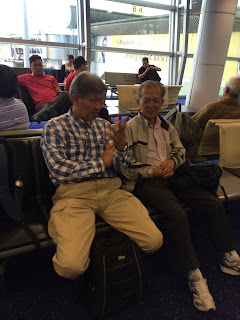









































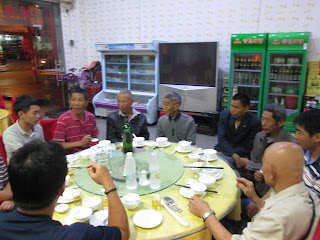


















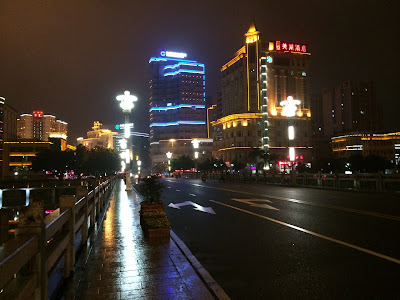











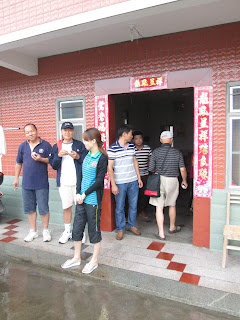





































































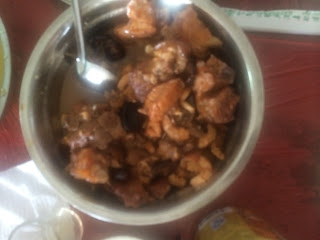
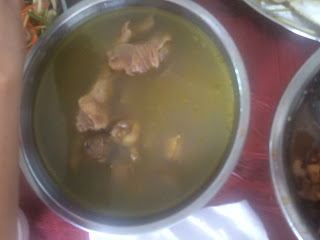











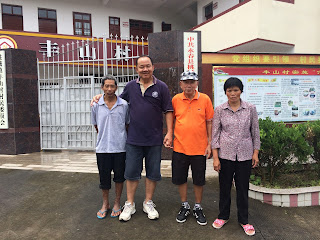































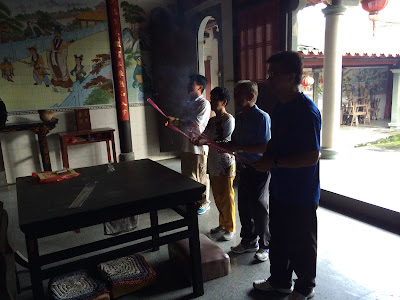








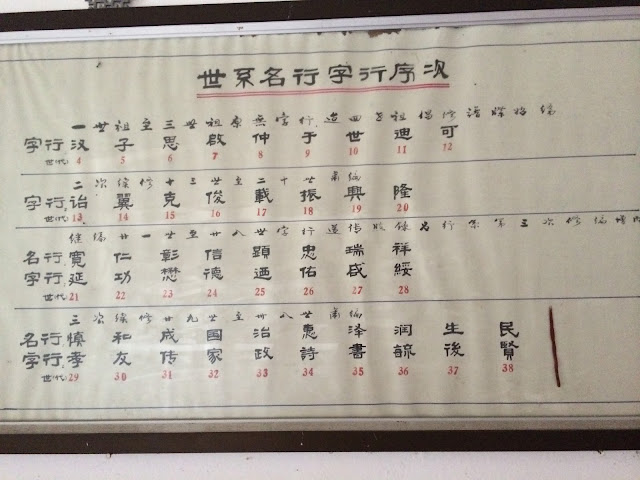




























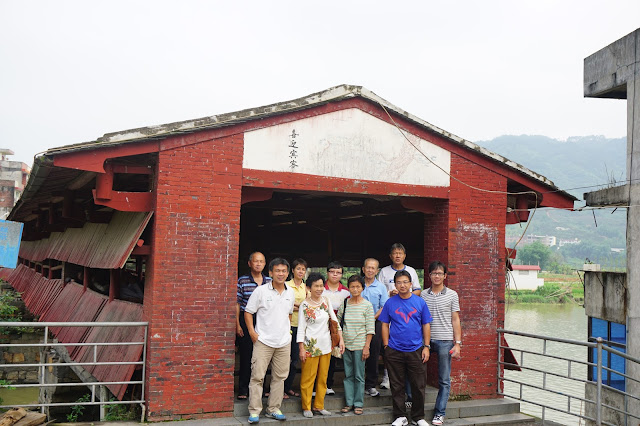



































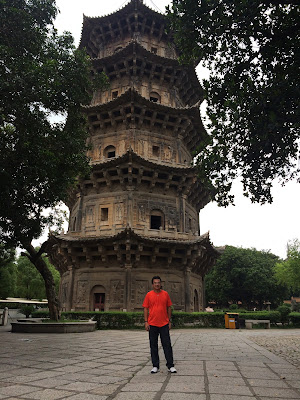







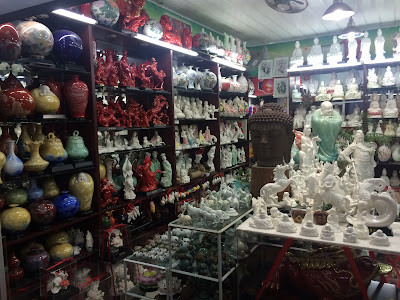

















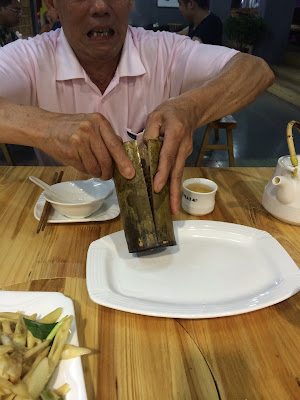








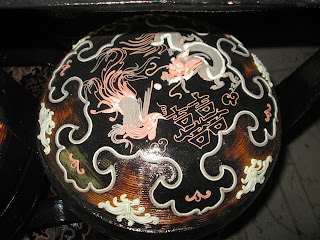



















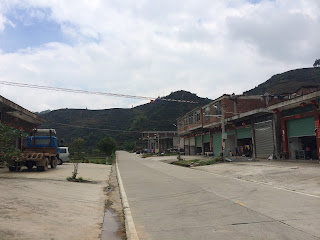


















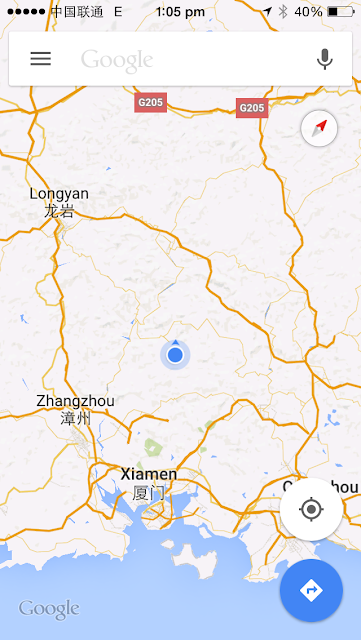















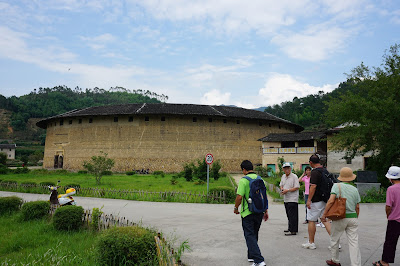


















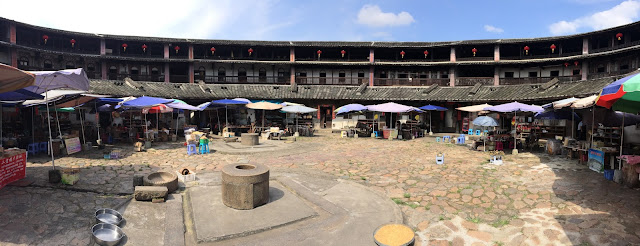




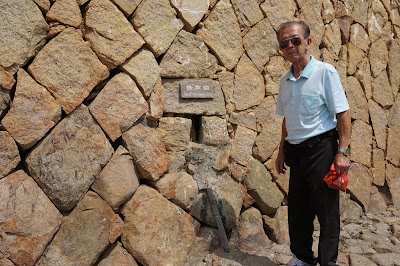

























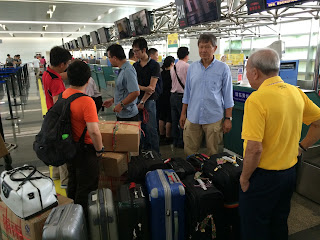

No comments:
Post a Comment